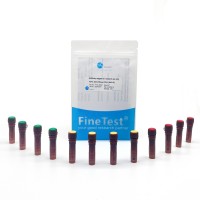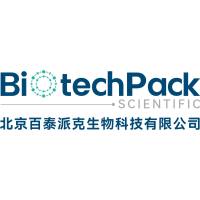Protocol for isolating DNA from embryo yolk sacs, or toes, or 2 mm tail for PCR
互联网
1. Dissect embryos and place each yolk sac in a microfuge tube (can be frozen at -20°C prior to extraction). Original method cited for mouse toes, or 2 mm tail,
Reagents:
A) 25 mM NaOH / 0.2 mM EDTA. The pH is about 12.
B) 40 mM Tris HCl (not Tris base). The pH is about 5. Don't adjust the pH.
For yolk sac/placenta/tail/toes
2. Add 40 µl (100 µl for tail/toe) 25 mM NaOH / 0.2 mM EDTA.
3. Place at 95°C for 20 minutes (in a thermal cycler)
4. Add 40 µl (100 µl for tail/toe) 40 mM Tris HCl. 5. Vortex. The DNA is now in a 20 mM Tris/0.1 mM EDTA at pH 8.1 with about 12.5 mM Na++ ions. That's pretty close to the 10 mM Tris/ 0.1 mM EDTA / pH 8 solution used to store DNA.
6. Use 1 µl for PCR
7. (May need to microfuge for 6 minutes and transfer supernatant to new tube for storage)
from Gary Truett 11/4/98 on jax informatics mgi-list (TruettGE@mhs.pbrc.edu).
"We tested this with 1 microliter in a 10 microliter PCR reacion volume and got beautiful results, just as good as clean, phenol-chloroform extracted DNA. I suspect that you could dilute the volume further if you wished to run hundreds of PCR reactions per toe sample. We used 200 microliter volume so that the DNA would fit in a standard 96 well PCR plate."









